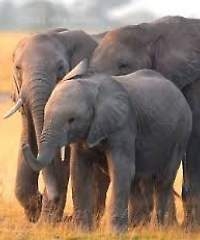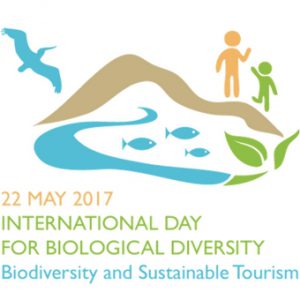Over 20,000 African elephants poached in 2013

Geneva: Over 20,000 African elephants were poached across the continent in 2013 according to a report released by the Secretariat of the Convention on International Trade in Endangered Species of Wild Fauna and Flora (CITES).
Although the sharp upward trend in illegal elephant killing observed since the mid-2000s, which had peaked in 2011, is levelling off, poaching levels remain alarmingly high and continue to far exceed the natural elephant population growth rates, resulting in a further decline in elephant populations across Africa.
The report also shows a clear increase in the number of large seizures of ivory (shipments over 500 kg) made in 2013, before the ivory left the African continent. For the first time, the number of such seizures made in Africa exceeded those made in Asia. Just three African countries — Kenya, Tanzania and Uganda — accounted for 80% of those seizures. Large-scale ivory seizures are indicative of transnational organized crime being involved in the illicit ivory trade.
“Africa’s elephants continue to face an immediate threat to their survival from high-levels of poaching for their ivory and with over 20,000 elephants illegally killed last year the situation remains dire. Due to the collective efforts of so many, we also see some encouraging signals, but experience shows that poaching trends can shift dramatically and quickly, especially when transnational organized crime is involved,” said John E. Scanlon, Secretary-General of CITES.
Southern Africa continues to hold the lion’s share of Africa’s elephants, holding close to 55% of the known elephants on the continent. Eastern Africa holds 28% and Central Africa 16%. In West Africa, less than 2% of the continent’s known elephants are spread over 13 countries.
Poverty (measured by infant mortality rates) and weak governance (measured by law enforcement capacity and corruption levels), together with demand for illegal ivory in consuming nations are three key factors linked to higher poaching levels.
Overall poaching numbers were lower in 2013 than in 2012 and 2011 – but they continue to exceed 20,000. The report warns that poaching levels will lead to continuing declines in the African elephant population.
The report identifies monitored sites where poaching is increasing (33% of monitored sites), including Dzanga Sangha (Central African Republic), as well as those sites where a decline in poaching has been observed (46%), such as Zakouma National Park (Chad). Some populations of elephants continue to face an immediate threat of local extinction.
The report containing the latest figures (2013) from the CITES Monitoring Illegal Killing in Elephants (MIKE) programme and the Elephant Trade Information System (ETIS) will be discussed at the 65th meeting of the CITES Standing Committee taking place in Geneva from 7 to 11 July 2014.
In March 2013, based on the findings of ETIS, CITES identified eight countries (Kenya, Tanzania, Uganda, China, Malaysia, The Philippines, Thailand, and Viet Nam) as the most heavily implicated in the illegal ivory trade chain as source, transit or destination countries. CITES took decisions at that time requesting all eight countries to develop and implement National Ivory Action Plans to tackle the elephant poaching and smuggling crisis.
Several conferences held since CITES Parties met in 2013, including in Gaborone, London and New York, have further contributed to securing high-level political support across all continents.
The CITES Standing Committee next month will assess the eight countries National Ivory Action Plans, and will discuss the next steps to stop illegal ivory trade, including whether additional countries should develop National Ivory Action Plans.
The Committee will also consider the roll out of a wide-range of enforcement-related decisions taken by CITES in March 2013 on other species being pressured by illegal trade, including rhinos, Asian big cats, rosewood, pangolins, freshwater turtles and tortoises, great apes, and snakes, as well as a study of the legal and illegal trade in wild cheetahs.
For more info – cites.org.
June 13, 2014














